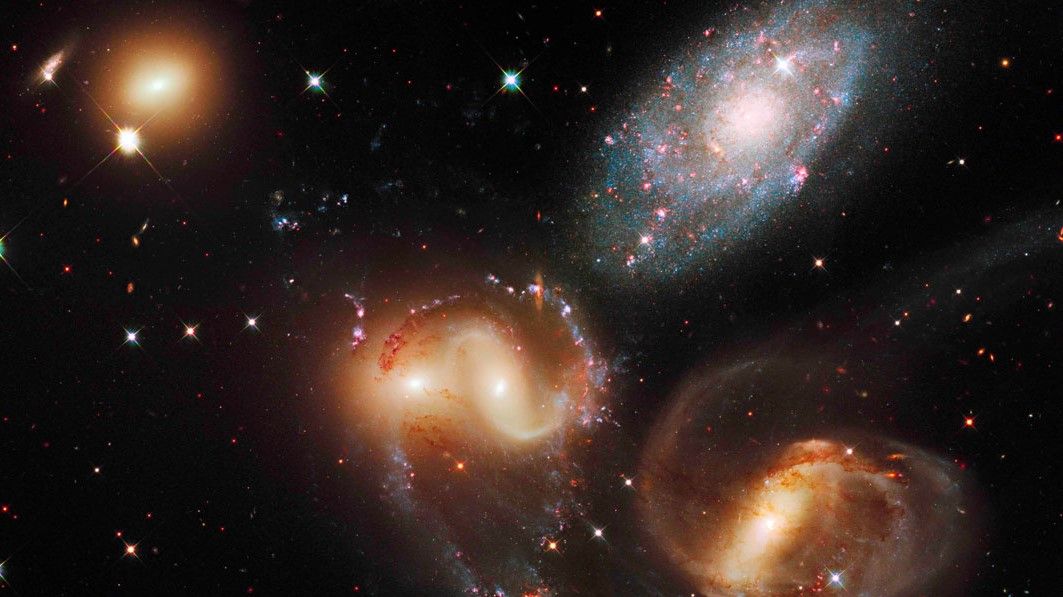Hubble Space Telescope discovers 11-billion-year-old galaxy hidden in a quasar's glare [View all]
By Robert Lea published about 6 hours ago
Astronomers normally observe galaxies by observing light these objects emit, but some tricky galaxies require a different approach.

A galaxy grouping called Stephan’s Quintet, which contains an imposter galaxy that is actually much closer to Earth than the others. (Image credit: NASA, ESA, and the Hubble SM4 ERO Team)
Using the Hubble Space Telescope, a team of astronomers has used a tricky technique to discover an elusive 11-billion-year-old galaxy. Rather than observe the light this realm emits, they watched for the light it absorbs.
Just as we see a light bulb via the light it emits, astronomers usually observe galaxies using the light their stars emit. Galaxies put out light waves found across the entire electromagnetic spectrum, and different telescopes are able to observe these cosmic objects in different wavelengths of light to form a full picture.
But, when a galaxy is located along the same line of sight as another, more distant, source of bright light, there's another way to go about these galactic observations. As light passes through a background galaxy toward a foreground galaxy, for instance, gas and dust in the foreground galaxy will absorb some of the background one's wavelengths. And because chemical elements absorb light at specific wavelengths, looking for gaps in the light output — or spectra — from a background source can tell astronomers what that light had passed through on its way to our telescopes. In other words, light in those "gaps" would've been absorbed by a foreground object on the way to our vantage point.
One potentially useful background source for this technique are quasars, which are extremely bright galactic hearts powered by supermassive black holes blasting out jets of radiation and matter as they feast on surrounding material.
More:
https://www.space.com/hubble-elusive-11-billion-year-old-galaxy-light-absorption
